Part Three
– Kolë Kamsi, the Intellectual Who Devoted His Life to Education and Scientific Research –
Memorie.al / This paper will shed light on Kolë Kamsi, an intellectual who dedicated his life to education in Albania, about whom little has been written to date. The analysis of Kolë Kamsi’s figure will primarily be developed through a comparative analysis of archival sources, media writings, and articles published about him. Born on September 23, 1886, in Shkodër, the father of three children – Paolini, Karlo, and Terezina Kamsi – with a social background as a small merchant and a profession as an educator, he contributed significantly to the field of education and national culture. A scientific personality, folklorist, teacher and pedagogue of the Albanian language, author of school textbooks, translator, prose writer, fabulist, publicist, editor, and an outstanding scholar of the Albanian language and social traditions.
Continued from the previous issue
These textbooks were used by students for thirty years (1915–1945) and were removed from the school curriculum in 1945, the year the communist dictatorship was being installed. In addition to school textbooks, Kamsi systematically published methodological articles for teaching with a scientific-educational character, for analyzing teaching themes according to new methodologies, in the magazines and newspapers of the 1907–1960 period, both at home and abroad.
It is sufficient to mention a few of them, such as: the magazine Albania, using the pseudonym Komneni (London, 1897–1907, 1909), the magazine Corriere della Puglie (a special issue on Albania, 1917), the magazine Kuvendi (Rome, 1919), the magazine Hylli i Dritës (Shkodër, 1913–1914, 1921–1924, 1930–1944), the magazine Kalendari Kombiar (Sofia, 1912), the magazine Përparimi (Shkodër, 1914–1916), the newspaper Përlindja e Shqipënies, the magazine Agimi (Shkodër, 1919–1922), the magazine Shkolla e Re (Shkodër, 1921), the magazine Leka (Shkodër, 1929–1940, 1943–1944), the magazine Shejzat (1957–1974, 1978), the magazine Kalendari i veprës Pijore (Shkodër, 1927), Diturija (Tiranë, 1928), Edukata e Re (Tiranë, 1930), Shkolla Shqiptare (Tiranë 1941), Buletin për Shkencat Shoqërore (Tiranë, 1956), Buletin për Shkëmbimin e Eksperiencës (Shkodër, 1954), Nëndori (Tiranë, 1955–1960), Buletin i Universitetit Shtetëror të Tiranës, seria shkencat shoqërore (Tiranë, 1957–1960).
Based on archival research, I have been able to study some of Kolë Kamsi’s manuscripts about the Arbëresh of Italy, and not only, thus getting a closer look at his contribution. Kolë Kamsi dedicated a special writing to the figure of Milo Duçi, otherwise known as “Sulo Malësori.” In his writing, he calls him an old parish priest of the National Renaissance, highlighting his contribution. Kolë Kamsi writes: “He was a tireless worker who, with his pen, ignited and kept alive the flame of patriotism in the colony of Albanians in Egypt and rendered great services to the Albanian cause and the Albanian language.” At the same time, Milo Duçi is the author of a number of works, having merits not only as a journalist but also as a writer in the Tosk dialect.
Another of Kolë Kamsi’s writings is the one about our national hero, Gjergj Kastriot Skanderbeg. In his writing, Kamsi writes about the gift that Ferdinand I made to Skanderbeg, the city of Trani, for the help he gave against his enemies. Kamsi informs us that: “The Kastrioti family lived in Palatina for hundreds of years, until 1539, under the title Marchesi.” He further writes about how a part of the Albanian population moved from the province of Lecce to Calabria. Kamsi also refers to the author Milan Šufflay, in his book ‘Serbs and Albanians,’ where he says that; “the lineage of Gjon Kastrioti died out in the sixteenth century.” An interesting moment that takes place in Kamsi’s writings is Skanderbeg’s Journey to Rome in 1465, where he asks the Pope for help in money and men. Skanderbeg was received with high honors: “A multitude of people had gone to that eternal city, to see with their eyes the greatest warrior of that time.” Furthermore, the memory of the hero remained alive in Rome; near the Quirinal, there is a street named; “Via Skanderbeg.”
Writing by Kolë Kamsi is the one about Pashko Vasa and his publications. In his writings, he characterizes Pashko Vasa as one of the first pioneers of the National Renaissance. He then focuses on his career, mentioning the influence that French and Italian literature had on Vasa, and further mentioning the contribution he made as a participant in the war for the liberation of Venice. What is interesting in Kamsi’s writing are the words that Pashko Vasa transmits to the Sultan regarding the proposal to become Vali (Governor) of Kosovo: “Your Majesty, I am an official of the Empire and strive to serve with sincere zeal, but I am an Albanian, and if Your Majesty compels me to go there, you are forcing me to commit a betrayal. I will betray the Emperor, or I will betray my homeland.” And further, Kamsi presents the works and the importance of the spread of the Albanian language by Pashko Vasa.
Another writing by Kamsi is ‘Gjuha e malli i Atdheut’ (The Language and Longing for the Homeland), which is precisely about the Albanians of Italy. Kamsi places emphasis on the preservation of traditions and the importance of language, as the only unifying element. Of course, coexisting with a foreign community also brings influences that may aim at the extinction of the language, but which have not been able to fully achieve this. “The Albanian villages of Northern Calabria and Basilicata preserved their ethnic character the most,” and this is due to their geographical position. According to Kamsi’s writings, the Albanian language was spoken not only inside the house but also outside. According to him, this is especially noticeable in the lower strata of the population. Furthermore, the preservation of the dialectic has brought considerable benefits to the national language, because they have been able to produce new words that were archaic.
The factor of mixed marriages is also an element that has contributed to the loss of the language. “Indeed, a poor Cathedra (Chair) for teaching the Albanian language and Albanian literature was established after the efforts of the great poet Jeronim de Rada in the year 1822.” But it failed to function. Years later, Italian writers also raised their voices about the importance of the language, for the sake of studying it as a science. The Arbëresh also respect the cult of their ancestors; Albanian symbols are seen in every house. An aspect on which he focuses his writing is the customs of the Arbëresh. Thus, regarding the customs of the dead, the author quotes: “As soon as a family member departs from this life, the women break into cries and call out with the most sorrowful words, they kiss their hands and faces, shedding tears over them.
Men do not cry because they consider it a shame. Women beat their heads with their fists and tear hair from their braids, which they throw over the corpse.” Other rites that Kolë Kamsi makes known to us were those related to the Holy Water, which was the baptism of Jesus Christ, rites for Saint Lazarus, etc. The celebration of Pentecost was another rite connected to the occupation of the lands by the Turks. Besides these, they have been able to keep the wedding rites alive. Writing covers the Superstitions and National Games, which have been preserved among the Arbëresh. For example, they believed in witches; breaking a mirror was considered a misfortune. The cleanliness of the environment in the case of childbirth is interesting. The dissatisfaction of people could bring bad luck to the child. Interesting writings by Kolë Kamsi are also the proverbs or aphorisms. Such are for religion:
Zoti e për gjithkënd (God is for everyone) (Shkodër), Zoti s’harron, por vonon (God does not forget, but delays) (Shkodër), for the state of people’s lives, such as: Mos ha çka të shohç, por ha çka të kesh (Don’t eat what you see, but eat what you have), Mos më thuej si kje, por më kallxo si je (Don’t tell me how you were, but show me how you are) (Shkodër), for sleep and rest, such as Gjumi i tepërm, rroba të vjetra (Excessive sleep, old clothes), Gjumi nuk ka besë (Sleep has no faith), etc.
He dedicated his next writing to the list of Albanian magazines published by the Arbëresh of Italy, among them are:
L’Albanese d’Italia, in Naples;
Fiamuri i Arbërit, the first issue on July 20, 1883, in two languages;
Arbri i Ri, where Gustav Meyer conducted a study on Albanians;
Ylli i Arbreshvet;
La Nazione Albanese, dated 15.12.1924, with a political and literary character;
La Gazzetta Albanese published in Rome, Italy, in 1904;
Albania, published on 24.12.1929 in Albanian and Italian, and in English in New York, it became a monthly; and many other magazines and newspapers.
Kamsi dedicated another study to Marko Boçari, where he aimed to elevate his figure through popular song. The contribution of the Albanians of Italy to the Albanian Renaissance remains again in Kamsi’s focus. Here he refers to foreign contributors, like Meyer, or other authors for their opinions about the Albanian people. The oldest Italo-Albanian document known to date is the Dottrina e krishterë (Christian Doctrine) by Lukë Matranga, as the first work, published in 1592. The importance of this document is noted as a work in the dialect of the Arbëresh of Sicily. Contribution was given by De Rada, Dhimitër Kamarda, Zef Skiroi, etc.
An absolute historical moment is represented by the two linguistic congresses; among the decisions they made are: the founding of a National Society, the use of only one alphabet, and the publication of an Italo-Albanian magazine. The Arbëresh also contributed to Albania’s political issues, lobbying for its protection. Finally, Kolë Kamsi also talks about the difficult moments of the Arbëresh; many of them were even condemned for the contribution they gave to the Albanian cause. Piedmont would become the center of the Arbëresh. “Among the 70 people who were tried by a special court in Cosenza, more than 40 were Italo-Albanians.”
Kolë Kamsi during the Communist Regime
Kolë Kamsi lived within a timeframe of 74 years. A part of his life he spent under the communist regime, one of the harshest regimes that Albania experienced. This regime was installed so harshly that one of the most persecuted groups of this dictatorial regime was the intellectuals. Many of them were sentenced without trials; they were persecuted, as the Party considered these individuals much more educated than it would have wanted. Many of them became a threat or a menace, but fortunately Kolë Kamsi survived the persecution and harassment, as he focused entirely on his academic and educational work.
Nevertheless, within this “suppressed freedom” that the regime installed, many people continued to write freely, in the field of literature, history, folkloristics, that is, in terms of patriotic contribution. However, even Kamsi could not escape the investigative procedures, and in a report from 1950, by the local authorities in Shkodër, he was addressed with several questions of a biographical nature, for example, “participation in the National Liberation War.” The educators Kamsi did not participate in the National Liberation Army, nor did him perform military service. To the next question asked about which organization he was a part of before the liberation, he answered in the negative, meaning he was not part of any organization.
“As an educator, I was a member of the fascist party and the Professional Union in the Democratic Front organization in the Red Cross in the Cultural League.” Kamsi was never sentenced by the courts. It seems that Kamsi was far from the examples of internment of his intellectual peers; he led a family life. His wife, Gjyzepina Kamsi, was a housewife; his son, Paolin Kamsi, was a teacher in Rrëshen; his other son, Karlo Kamsi, was a student in Tirana. The daughter of the family, Terezina, was a student in Shkodër, and in the final evaluation of the report, Kamsi is labeled as a sincere person.
Thus, Kolë Kamsi was decorated on October 19, 1957, with decree number 2544, upon the proposal of the Ministry of Education and Culture, the Presidium of the People’s Assembly, with the “Order of the Flag” with the motivation: “For the valuable contribution to the education of the new generations, during 50 years of regular and uninterrupted work in the education sector.” While in democracy, Kamsi was decorated in 1993 and was given the title “Teacher of the People,” with the motivation: “Teacher of the beginnings of Albanian national education, passionate scholar of language and history, of national culture and traditions, publisher of works and scientific articles, example of citizenship, democratic and progressive spirit.”
The Shkodër Municipal Council, with decision no. 52, dated June 29, 2005, after reviewing the request of the commission for the evaluation of titles and nomenclature, as well as the request of the Independent Education Unions, decided to approve the title “Kolë Kamsi” for the teaching profession and “Gratitude of the City of Shkodër.”
On February 25, 1960, the distinguished personality Kolë Kamsi passed away, leaving his works and contributions in the field of education eternal. Kamsi was accompanied to his final resting place with a magnificent ceremony organized by intellectuals from various fields of the country, representatives from the Ministry of Education and the Institute of Sciences in Tirana, intellectuals from the Pedagogical Institute and the State Gymnasium, who, along with schoolchildren and students, accompanied the funeral cortege with wreaths in their hands, to the sounds of the city band along the boulevard.
After his death, many wrote about his figure. Here is how Kol Palokë Kamsi was remembered by his inner circle:
“I deeply mourn Kolë Kamsi, the faithful friend, the tireless scientist. His death is a great loss for science, for the nation, for the family, for friends, my heart aches.” (Prof. Maximilian Lambertz, Leipzig, 1960.)
“The death of our dear former student Kolë Kamsi is a great loss of a distinguished writer and tireless worker.” (Prof. Aleksandër Xhuvani, 1960.)
“An intellectual figure to be highlighted. Kolë Kamsi represents one of the most prominent personalities of Albanian culture in the first half of this century.” (Father Zef Faraco, 1980.)
“Kolë Kamsi had devoted himself entirely and wholeheartedly to education, without expecting rewards, without seeking praise or prizes. He worked in silence, he worked systematically and tirelessly, which is why his work has left its mark on the history of national education and Albanian literature.” (Prof. Karl Gurakuqi.)
“Kolë Kamsi has left indelible traces in the history of the Albanian school and national education, giving his valuable contribution in several fields of vital importance for the period in which he lived. Kamsi throughout his life was distinguished for his mental clarity, the power of analysis and synthesis, and the depth of the problems he addressed. At the same time, he enjoyed authority in the school and intellectual circles for his manly character will, and the seriousness of the issues he tackled. In addition to esteem and respect, he also enjoyed the love of young people, as well as colleagues for the spirit that characterized him.” (Jup Kastrati, 1960.)
According to the book “Interview with Oneself” by Petro Marko, “Kamsi was silent, but a great worker. He did linguistics, grammar, reading, and composition. I say wholeheartedly that he taught us Albanian well: the grammar, our poets, the history of Albanian writing, and our culture.”
Conclusions
Even during the communist regime, Kolë Kamsi did not interrupt his journey for other contributions in the field of education. In fact, during these years, Kamsi was appointed to the Higher Institute of Studies, specifically in 1950. He was honored with the “Order of the Flag.” It seems that Kolë Kamsi was not one of the few intellectuals who were not persecuted in the brutal camps of the communist regime, nor was he even suspected of such a thing. Kamsi never became a risk or a threat to the ideology of that time; he could live even under that system, whether free or not in his thinking.
He aimed for only one thing: what more could he do for his country, how could he contribute? And this could only come through his studies. A nation can improve its future, its fate, and can be more hopeful only through education. An educated nation is consequently a nation free in thought and writing. Perhaps everyone under communism chose a form of living, a form of motivation. Kamsi chose precisely knowledge and further studies, serving his people. Memorie.al




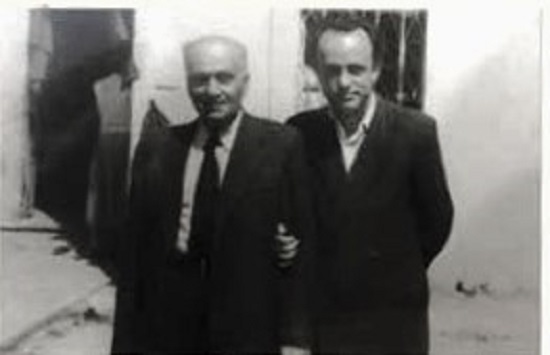
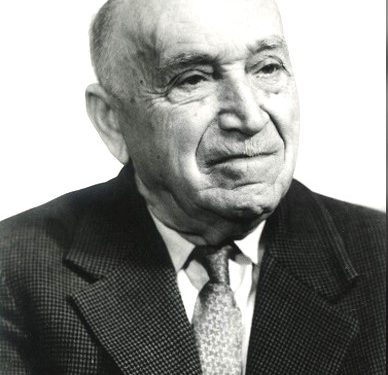
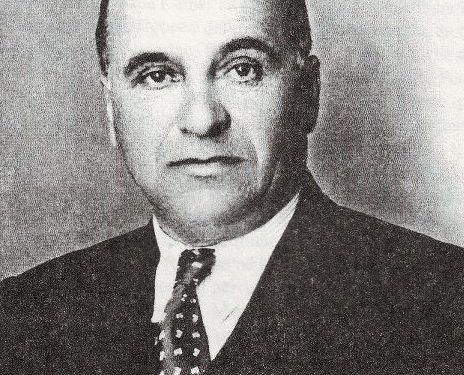
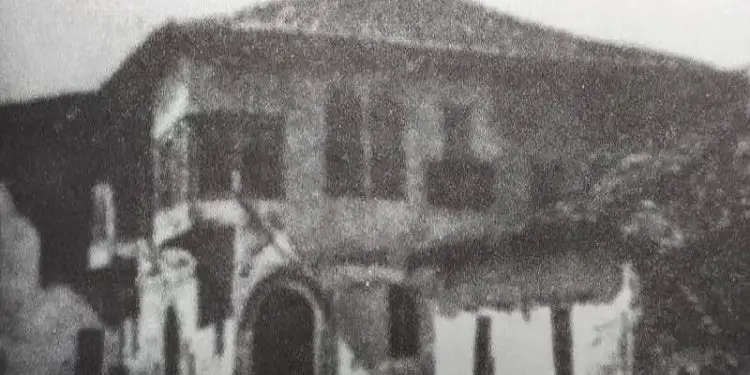
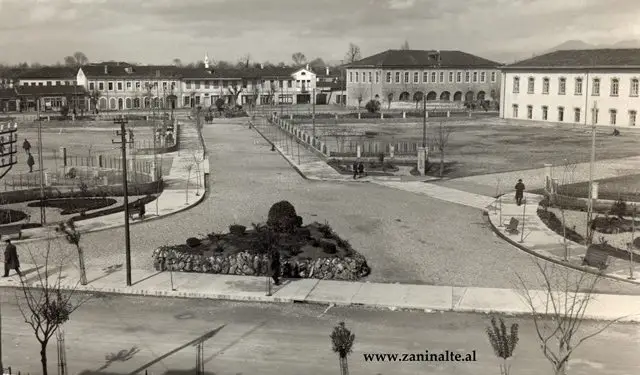

![“We hosted the German friend with wine, ‘Moskat’ raki that Enver [Hoxha] used to drink, but in his villa, he told me: ‘Hey Belul, who told you to accompany Strauss…?’”/ The rare testimony of the former Chairman of the Pogradec Committee](https://memorie.al/wp-content/uploads/2025/11/jozef-shtarus-350x250.jpg)

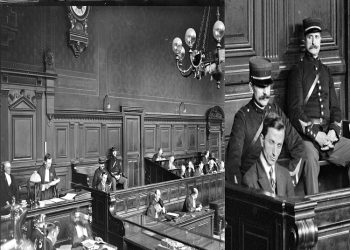
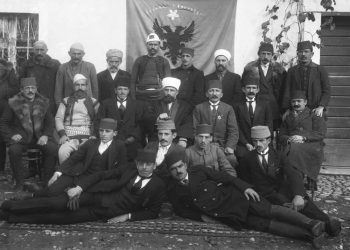
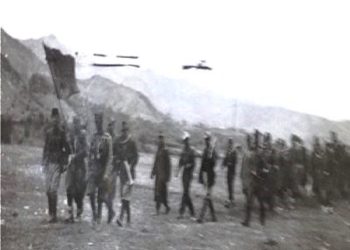
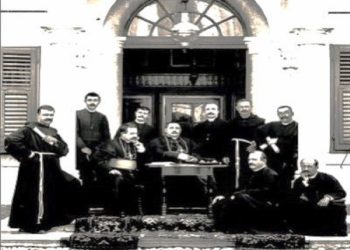
![“We hosted the German friend with wine, ‘Moskat’ raki that Enver [Hoxha] used to drink, but in his villa, he told me: ‘Hey Belul, who told you to accompany Strauss…?’”/ The rare testimony of the former Chairman of the Pogradec Committee](https://memorie.al/wp-content/uploads/2025/11/jozef-shtarus-75x75.jpg)